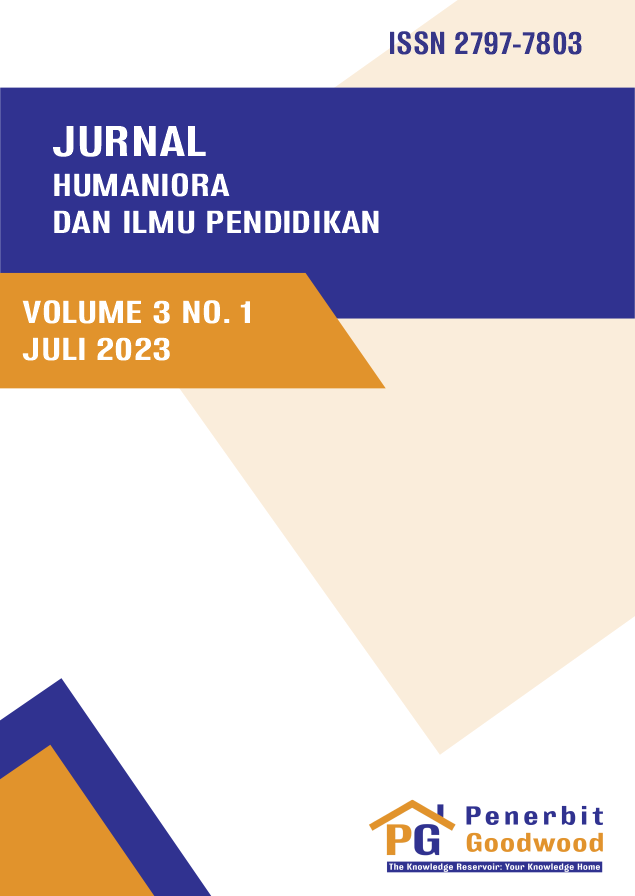Analisis Pengaruh Pendidikan dan Gini Rasio terhadap Tingkat Pengangguran di Kalimantan Selatan
Abstract:
Purpose: The unemployment rate as well as the labor force indicate the large number of people who must be included in the development process. This shows that the dynamics of the development process must be able to involve the entire work force, meaning that a large number of work force can become a burden for economic development. Apart from education, another aspect that influences the unemployment rate is the unequal distribution of income (gini ratio). Inequality in income distribution is a problem of differences in income between the richest and the poorest individuals. The greater the income gap, the greater the variation in income distribution.
This study aims to obtain quantitative "evidence" regarding the effect of education and the gini ratio on the unemployment rate.
Methodology: Based on the research objectives, this research is a quantitative research with the type of explanatory research, which will explain the causal relationship between the independent variables and the dependent variable through hypothesis testing. The type of data used in this study is secondary data. The secondary data used is in the form of a time series from 2013 to 2017. The data analysis used is multiple linear regression analysis.
Results: Based on the research results it is known that (1) Education partially has a positive and significant effect on the unemployment rate in South Kalimantan. This means that education can reduce the number of unemployed in accordance with the theory of human capital, therefore education is one of the factors that needs to be improved so that the quality of human resources increases and has competitiveness; (2) The Gini ratio (income inequality) partially has a positive and significant effect on the unemployment rate in South Kalimantan. This means that when income inequality is high, the unemployment rate will also increase.
Downloads

This work is licensed under a Creative Commons Attribution-ShareAlike 4.0 International License.
Aqil, Muhammad, Qureshi, M. A., Ahmed, R. R., & Qadeer, S. (2014). Determinants Of Unemployment In Pakistan. International Journal of Physical and Social Sciences, Vol. 4, No. 4.
Badan Pusat Statistik, B. P. S. (2014). Anggaran Pendapatan Negara. Jakarta: www.bps.go.id.
Efriza, U. (2014). Analisis Kesenjangan Pendapatan Antar Kabupaten/Kota di. Provinsi Jawa Timur di Era Desentralisasi Fiskal. Malang:UB.
Kaufman, B. E., & Hotchkiss, J. L. (2009). The Economics of Labor Markets. Fifth Edition, The Dryden Press.
Loku, A., & Deda, G. (2013). Unemployment In Relation Of Growth Population. International Journal of Research In Social Sciences. Vol. 2, No.2.
Sirait, N., & Marhaeni, A. (2013). Analisis Beberapa Faktor Yang Berpengaruh Terhadap Jumlah Pengangguran Kabupaten/Kota Di Provinsi Bali. E-Jurnal Ekonomi Pembangunan Universitas Udayana Vol. 2, No. 2.
Sugiyono. (2012). Metode Penelitian Kuantitatif Kualitatif dan R&B. Bandung: CV. Alfabet.
Sukirno, S. (2008). Makro Ekonomi Teori Pengantar. Jakarta: PT Raja. Grafindo Persada.
Todaro, M. P. (2014). Pembangunan Ekonomi di Dunia Ketiga, Edisi Kedua. Jakarta: Erlangga.
Todaro, M. P., & Smith, S. C. (2014). Pembangunan Ekonomi. Jakarta: Erlangga.
Yacoub, Y. (2012). Pengaruh Tingkat Pengangguran terhadap Tingkat Kemiskinan Kabupaten/Kota di Provinsi Kalimantan Barat. Jurnal Ilmu Ekonomi, Vol. 8, No. 3, hlm. 176-185.
Yuliatin, Huseno, T., & Febriani. (2011). Pengaruh Karakteristik Kependudukan Terhadap Pengangguran Di Sumatera Barat. Jurnal Manajemen dan Kewirausahaan, Vol. 2, No. 2.
Zulhanafi, Aimon, H., & Syofyan, E. (2013). Analisis Faktor-Faktor Yang Mempengaruhi Produktivitas Dan Tingkat Pengangguran Di Indonesia. Jurnal Kajian Ekonomi, Vol. II, No.03.
- Aqil, Muhammad, Qureshi, M. A., Ahmed, R. R., & Qadeer, S. (2014). Determinants Of Unemployment In Pakistan. International Journal of Physical and Social Sciences, Vol. 4, No. 4.
- Badan Pusat Statistik, B. P. S. (2014). Anggaran Pendapatan Negara. Jakarta: www.bps.go.id.
- Efriza, U. (2014). Analisis Kesenjangan Pendapatan Antar Kabupaten/Kota di. Provinsi Jawa Timur di Era Desentralisasi Fiskal. Malang:UB.
- Kaufman, B. E., & Hotchkiss, J. L. (2009). The Economics of Labor Markets. Fifth Edition, The Dryden Press.
- Loku, A., & Deda, G. (2013). Unemployment In Relation Of Growth Population. International Journal of Research In Social Sciences. Vol. 2, No.2.
- Sirait, N., & Marhaeni, A. (2013). Analisis Beberapa Faktor Yang Berpengaruh Terhadap Jumlah Pengangguran Kabupaten/Kota Di Provinsi Bali. E-Jurnal Ekonomi Pembangunan Universitas Udayana Vol. 2, No. 2.
- Sugiyono. (2012). Metode Penelitian Kuantitatif Kualitatif dan R&B. Bandung: CV. Alfabet.
- Sukirno, S. (2008). Makro Ekonomi Teori Pengantar. Jakarta: PT Raja. Grafindo Persada.
- Todaro, M. P. (2014). Pembangunan Ekonomi di Dunia Ketiga, Edisi Kedua. Jakarta: Erlangga.
- Todaro, M. P., & Smith, S. C. (2014). Pembangunan Ekonomi. Jakarta: Erlangga.
- Yacoub, Y. (2012). Pengaruh Tingkat Pengangguran terhadap Tingkat Kemiskinan Kabupaten/Kota di Provinsi Kalimantan Barat. Jurnal Ilmu Ekonomi, Vol. 8, No. 3, hlm. 176-185.
- Yuliatin, Huseno, T., & Febriani. (2011). Pengaruh Karakteristik Kependudukan Terhadap Pengangguran Di Sumatera Barat. Jurnal Manajemen dan Kewirausahaan, Vol. 2, No. 2.
- Zulhanafi, Aimon, H., & Syofyan, E. (2013). Analisis Faktor-Faktor Yang Mempengaruhi Produktivitas Dan Tingkat Pengangguran Di Indonesia. Jurnal Kajian Ekonomi, Vol. II, No.03.


